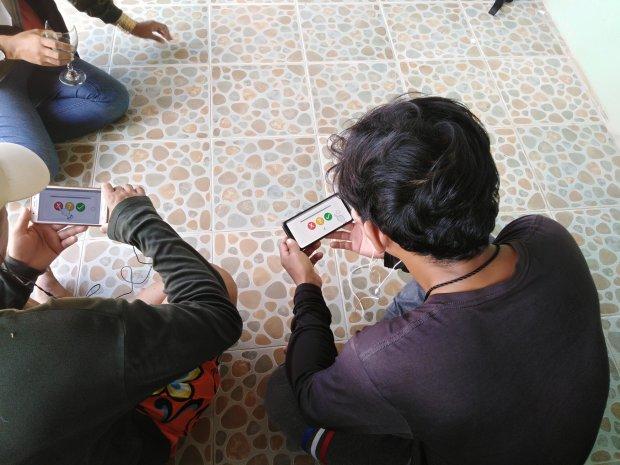This past week marked the 20th anniversary of the adoption of the Protocol to Prevent, Suppress and Punish Trafficking in Persons, especially Women and Children, otherwise known as the Palermo Protocol. Eponymously named after the Italian city where UN Member States convened and signed this landmark international treaty, the Protocol has in many ways defined and immeasurably impacted the legislative, programmatic, and moral reactions to modern slavery over the past two decades. Reflections on the Protocol have been the subject of both endearing public adulation and fierce academic criticism. Contemplating what has changed between then and now is crucial to organizing collective efforts and best allocating resources as we enter the Decade of Action and aspire to see the realization of SDG Target 8.7 to eliminate all forms of trafficking by the target date of 2030.
Trafficking is not an isolated incident, nor can we easily disentangle how, where, and why it occurs without consideration of matters such as labour rights, climate change, internal displacement, transnational migration, discrimination, and human agency. However, it is important to note that the Palermo Protocol was but one supplementary component of the much larger United Nations Convention against Transnational Organized Crime that was ratified 20 years ago. When taking stock of its shortcomings, scholars and practitioners point to a narrow conceptualization of trafficking through the lens of criminal justice and an oversimplification of perpetrator-victim dynamics. The embrace of such a law-enforcement centric paradigm neglects to consider the nuanced realities and multifaceted decision-making processes that often underlie the circumstances leading up to someone being trafficked.
Despite tremendous expenditure, a majority of anti-trafficking efforts initiated after the Palermo Protocol have broadly failed to achieve their core mission and sustain longer-term, positive impact, as evidenced by the ever-increasing number of victims worldwide. To public health professionals however, this will hardly come as a surprise. A criminal justice approach to anti-trafficking addresses downstream effects and has marginal, if any effect on the root causes and structural factors of why such exploitation occurs in the first place. Public health on the other hand, provides an overarching framework with which to understand and address trafficking that is victim-centric, rooted in evidence-based research, and takes a holistic perspective on risk and intervention. Within the international framework for implementing the Trafficking in Persons Protocol known as the 3 P’s (Prevention, Protection, Prosecution), prosecution has been historically overemphasized and simultaneously, prevention has been underemphasized.
With its roots in social justice and the ultimate goal of preventing harm from occurring, the field of public health is well-equipped to provide useful insights. Consequently, in the past decade there has been burgeoning research interest about what lessons and novel perspectives lie at the intersection of trafficking and public health. Trafficking is increasingly understood as a public health concern of global magnitude and is oftentimes described as having reached “epidemic proportions”. Not only does trafficking cause physical and mental health harms but trafficked persons regularly interface with service providers and healthcare facilities at some point during their experience of victimization. This means there are theoretical, practical, and policy-oriented implications for researchers investigating the public health-trafficking nexus.
Another trend that has gained traction since the adoption of the Palermo Protocol is the use of technology in the fight against trafficking. Researchers have sought to leverage artificial intelligence, machine learning, and information and communications technologies in a number of innovative ways to help enhance victim identification and better capture trends in big data related to trafficking. In our work with Apprise, a screening tool that supports frontline responder to identify victims of forced labor and human trafficking, we have explored the concept of human trafficking sentinel surveillance. Traditionally employed in the context of infectious disease, we find that key aspects of this methodology map on to dynamics seen in trafficking and can be used as a way to proactively identify victims and understand patterns of exploitation. Using this approach, sentinel sites are strategically identified where specialized professionals and frontline responders have access to hard-to-reach populations of potential trafficking victims (such as social service providers, health care facilities, NGO offices, and public and private labour inspectorates).
When these sites are equipped with digital screening and triage tools such as Apprise, they can be supported to collect high quality, micro-level data from potential victims, and to triage cases for further investigation. When interview responses are analysed, they can highlight changing practices over time, which can in turn be used to support more informed prevention, protection and prosecution activities. In fact, this is but one of many examples where methodologies commonly employed by public health experts have been explored in the research and response to human trafficking. Although perhaps seemingly disparate, we find research links between trafficking, technology, and public health that can have implications for policy and practice. Counter-balancing the critiques of the Palermo Protocol twenty years after its ratification, we find tremendous promise looking forward for the potential of interdisciplinary research to help shift the field away from simply seeing trafficking as a unidimensional issue and creating more effective initiatives to eradicate this horrible practice once and for all.


